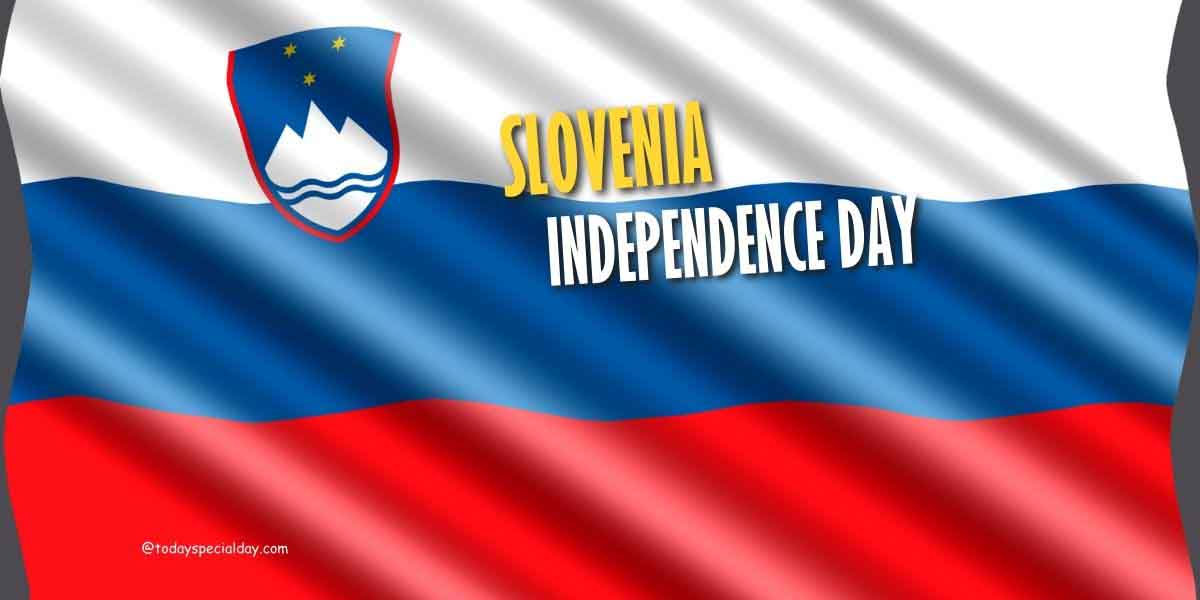Slovenia, a picturesque European gem, celebrates its Slovenia Independence Day on December 26. But what’s the story behind this significant date? Dive in as we unravel the history, celebrations, and reasons to cherish this special day.
Tucked away in Central Europe, Slovenia boasts breathtaking landscapes, rich culture, and a resilient spirit. Historically, Slovenia was a part of Yugoslavia until 1991 when it declared independence.
- Related: National Uprising Day
History of Slovenia Independence Day
Slovenia, located in central Europe and surrounded by countries like Italy and Austria, has a rich history dating back thousands of years. It’s known for being the birthplace of the oldest musical instrument and one of the earliest wooden wheels.
Over the centuries, it was part of the Roman Empire, faced invasions from groups like the Huns, and saw the arrival of Slavic tribes. Later, it was influenced by various Germanic tribes until Charlemagne’s era. During the Middle Ages, Slovenia experienced challenges such as attacks from the Turks and local uprisings.
By the 1800s, there was a growing desire among Slovenians for a unified nation. Eventually, Slovenia became a part of Yugoslavia, which later fell under Axis control during World War II. After the war, it remained part of a reconstituted Yugoslavia.
However, in 1990, Slovenia chose a different path. In a historic vote, it declared its independence, a decision now commemorated as Independence and Unity Day.
How to Observe Slovenia Independence Day
Official ceremonies:
Attend official celebrations such as flag-raising ceremonies, speeches, and cultural performances, often held in major cities like Ljubljana or Maribor.
Festivals and events:
Look for local festivals and events organized around the holiday. These may include concerts, food fairs, art exhibitions, and historical reenactments.
Visit museums and historical sites:
Learn more about Slovenia’s history and path to independence by visiting museums like the National Museum of Slovenia or the Museum of Slovenian History.
Enjoy traditional food and drink:
Sample Slovenian cuisine, including dishes like žlikrofi (steamed dumplings), potica (nut roll), and kranjska klobasa (sausage). Raise a toast with a glass of Slovenian wine or štrukli (a warm dough pastry with various fillings).
Watch fireworks:
Many cities hold firework displays in the evening, particularly Ljubljana.
5 Fascinating Facts About Slovenia
- Slovenia is home to over 10,000 caves, with Postojna Cave being the most famous.
- The country is roughly the size of the state of New Jersey but boasts diverse landscapes, from Alpine regions to coastal areas.
- Slovenians are proud of their beekeeping tradition, with painted beehive panels recognized by UNESCO.
- The oldest vine in the world, known as the “Old Vine,” resides in Maribor and still produces grapes!
- Slovenia is one of the most water-rich countries in Europe, with numerous rivers and glacial lakes.
Slovenia Independence Day Quotes, Wishes, and Messages
“Celebrating freedom and unity. Happy Slovenia Independence Day!”
“May the spirit of independence always shine bright. Cheers to Slovenia!”
“From the shadows of the past to a brighter tomorrow. Happy Independence Day!”
“Remembering the heroes of our past. Happy Slovenia Independence Day!”
“To a nation that stands tall and proud. Happy Independence Day!”
“Unity in diversity, strength in unity. Happy Slovenia Independence Day!”
“Here’s to the land of the free and the home of the brave. Happy Independence Day!”
“Celebrating the journey, cherishing the destination. Happy Slovenia Independence Day!”
“For the love of our land and people. Happy Independence Day!”
“To dreams realized and futures bright. Happy Slovenia Independence Day!”
Why We Love Slovenia Independence Day
Celebrating freedom and self-determination:
For many Slovenians, independence represents a hard-won victory after centuries of being ruled by other empires and countries. It’s a chance to celebrate their unique national identity and culture, free from outside interference.
Commemorating historical events:
Both June 25th and December 26th mark significant moments in Slovenian history. June 25th marks the declaration of statehood in 1991, while December 26th marks the withdrawal of the last Yugoslav troops from Slovenia in 1991, effectively marking the country’s complete independence. These days serve as a reminder of the sacrifices made by those who fought for Slovenia’s freedom and a chance to honor their legacy.
Bringing people together:
Independence Day is a time for Slovenians to come together, regardless of their backgrounds or political beliefs. It’s a chance to celebrate their shared identity and values, promoting unity and national pride.
Enjoying festive traditions:
Both June 25th and December 26th are marked by a variety of festive traditions, such as lighting candles, attending cultural events, enjoying traditional food and drink, and participating in outdoor activities. These traditions add to the celebratory atmosphere and create lasting memories.
Reflecting on the future:
Independence Day is not just about celebrating the past, but also about looking towards the future. It’s an opportunity to reflect on Slovenia’s achievements as an independent nation and consider its hopes and aspirations for the years to come.
Slovenia Independence Day Dates
Mark your calendars! Slovenia Independence Day is celebrated annually on December 26th.
| Year | Date | Day |
| 2023 | December 26 | Tuesday |
| 2024 | December 26 | Thursday |
| 2025 | December 26 | Friday |
| 2026 | December 26 | Saturday |
| 2027 | December 26 | Sunday |
FAQs
What is Slovenia Independence Day?
Slovenia Independence Day commemorates the nation’s declaration of independence from Yugoslavia in 1991.
When is Slovenia Independence Day?
Slovenia Independence Day is celebrated on December 26th each year.
Conclusion
Slovenia Independence Day is more than just a date on the calendar; it’s a celebration of freedom, resilience, and unity. As Slovenians come together each year, they not only honor their past but also embrace a future filled with hope and promise.

